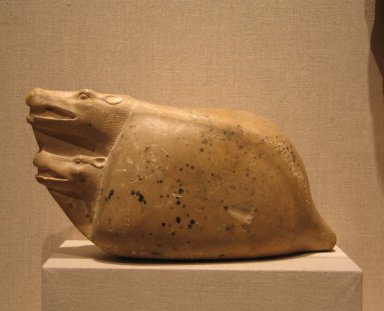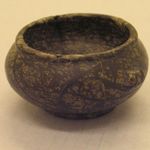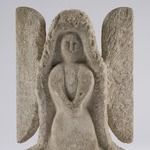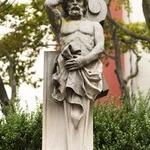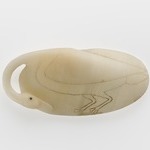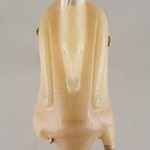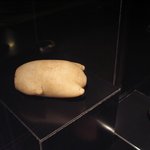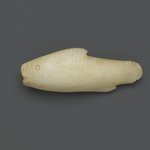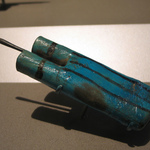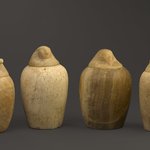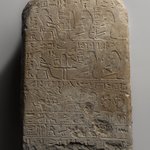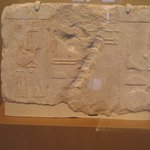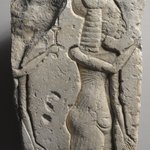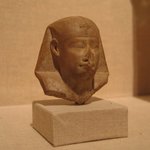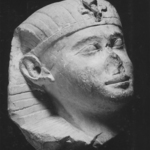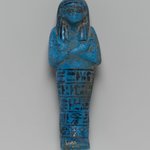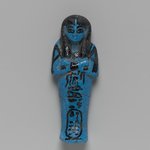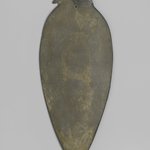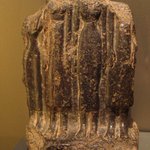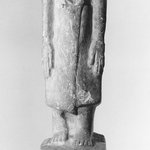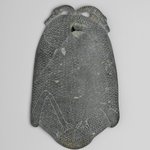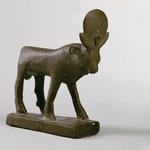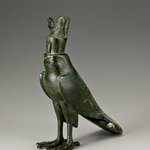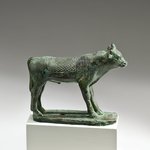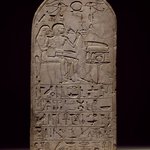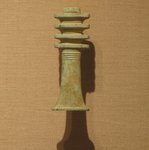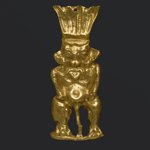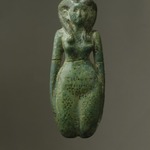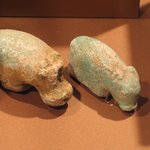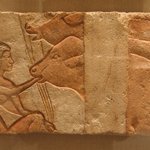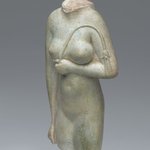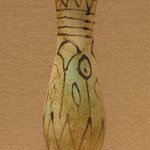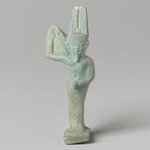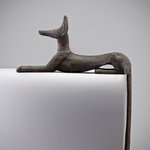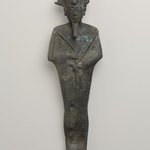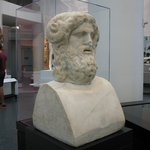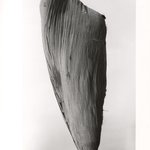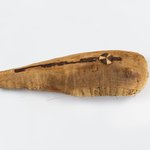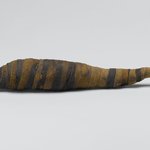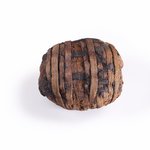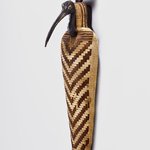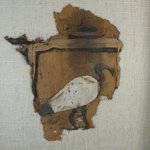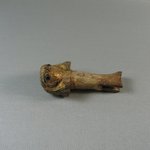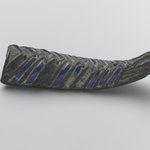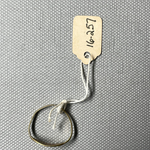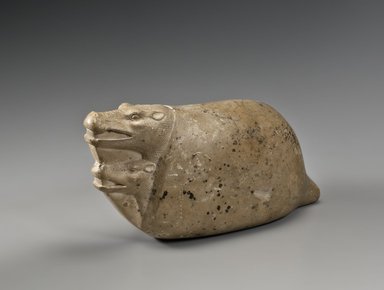
Mating Hippopotami
Egyptian, Classical, Ancient Near Eastern Art
In Egyptian art, one symbol could represent both a trait and its opposite. The hippopotamus could represent great danger and chaos or, alternatively, fertility and protection in childbirth. The statuette of a male hippopotamus could represent the god Seth, who embodied danger, chaos, and disorder in the world. Yet the rare limestone statuette of hippopotami mating perhaps served as a symbol that preserved the fertility of the earth. And a necklace consisting of images of the female hippopotamus goddess Taweret could protect a woman in labor.
MEDIUM
Limestone
DATES
664–30 B.C.E.
DYNASTY
Dynasty 26, or later
PERIOD
Late Period to Ptolemaic Period
DIMENSIONS
5 1/2 x 3 3/4 x 11 1/2 in. (14 x 9.5 x 29.2 cm) (show scale)



COLLECTIONS
Egyptian, Classical, Ancient Near Eastern Art
ACCESSION NUMBER
36.262
CREDIT LINE
Charles Edwin Wilbour Fund
CATALOGUE DESCRIPTION
Compact limestone (?) sculpture of two crocodiles enclosed in one body (?). Heads worked on great detail, body undecorated. Meaning unknown. Possible representation of the goddess Tanent.
Condition: Good; one side of body has extensive black stains. Other side of body is considerably weathered, apparently by vegetal growth during burial. Minor chips on various parts of head. Very fine workmanship.
MUSEUM LOCATION
This item is not on view
CAPTION
Mating Hippopotami, 664–30 B.C.E. Limestone, 5 1/2 x 3 3/4 x 11 1/2 in. (14 x 9.5 x 29.2 cm). Brooklyn Museum, Charles Edwin Wilbour Fund, 36.262. Creative Commons-BY (Photo: Brooklyn Museum (Gavin Ashworth,er), 36.262_Gavin_Ashworth_photograph.jpg)
IMAGE
overall, 36.262_Gavin_Ashworth_photograph.jpg. Brooklyn Museum photograph (Gavin Ashworth, photographer), 2012
"CUR" at the beginning of an image file name means that the image was created by a curatorial staff member. These study images may be digital point-and-shoot photographs, when we don\'t yet have high-quality studio photography, or they may be scans of older negatives, slides, or photographic prints, providing historical documentation of the object.
RIGHTS STATEMENT
Creative Commons-BY
You may download and use Brooklyn Museum images of this three-dimensional work in accordance with a Creative Commons license. Fair use, as understood under the United States Copyright Act, may also apply.
Please include caption information from this page and credit the Brooklyn Museum. If you need a high resolution file, please fill out our online application form (charges apply).
For further information about copyright, we recommend resources at the United States Library of Congress, Cornell University, Copyright and Cultural Institutions: Guidelines for U.S. Libraries, Archives, and Museums, and Copyright Watch.
For more information about the Museum's rights project, including how rights types are assigned, please see our blog posts on copyright.
If you have any information regarding this work and rights to it, please contact copyright@brooklynmuseum.org.
RECORD COMPLETENESS
Not every record you will find here is complete. More information is available for some works than for others, and some entries have been updated more recently. Records are frequently reviewed and revised, and we welcome any additional information you might have.
